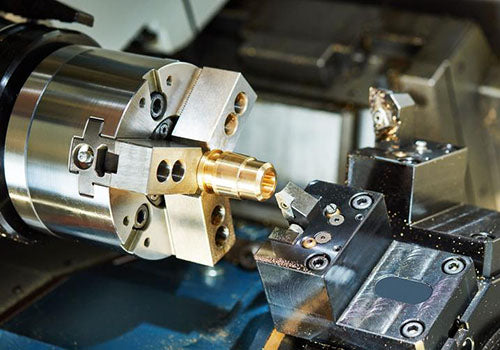
The Ultimate Guide to CNC ID & OD Turning Toolholders
Share
Introduction
CNC turning is a critical process in the manufacturing industry. It involves the use of a lathe machine to remove material from a workpiece to create a desired shape. Turning toolholders play a vital role in CNC turning, as they hold the cutting tools in place and ensure precise machining. In this guide, we will explore the different types of CNC ID and OD turning toolholders available, their features, and how to choose the best one for your machining needs.
Types of CNC ID and OD Turning Toolholders
There are various types of CNC ID and OD turning toolholders available in the market, each designed for specific machining requirements. The most common types include:
- Boring bar holders: Designed for boring and enlarging holes in workpieces. These toolholders support various types of boring bars, including solid carbide, indexable, and brazed carbide.
- Grooving and cutoff toolholders: These toolholders are used for making grooves and cutting off workpieces. They support various types of inserts, including full-faced, partial, and top-notch.
- Threading toolholders: As the name suggests, these toolholders are used for threading operations. They support various types of inserts, including partial profile, full profile, and lay-down threading inserts.
- Turning toolholders: These toolholders are the most common and versatile type. They support various types of inserts, including positive, negative, and neutral rake angle inserts. They are mainly used for roughing, finishing, and contouring operations.
How to Choose the Best CNC ID and OD Turning Toolholder
Choosing the best CNC turning toolholder depends on various factors, including the type of material being machined, the depth of the cut, and the required surface finish. Here are some tips to help you choose the right toolholder for your machining needs:
Consider the material being machined
Different materials require different cutting tool geometries and rake angles. For instance, high-speed steel inserts are ideal for machining steel, while ceramic inserts are ideal for machining aluminum and other non-ferrous materials. Carbide inserts are also popular for their durability and versatility.
Consider the depth of cut
For deep cuts, use a toolholder with a longer projection length to ensure stability and prevent chatter. A stable toolholder will reduce the risk of tool breakage and improve machining efficiency.
Consider the required surface finish
For a smooth surface finish, use a toolholder with a high positive rake angle. The rake angle determines the angle between the cutting edge and the workpiece surface. A high positive rake angle will result in a smoother finish, while a negative rake angle will produce a rougher finish.
When selecting a toolholder, it is important to consider the type of inserts that it supports. Inserts are the cutting tips that are fixed onto the toolholder. There are different types of inserts available, each designed for specific machining applications. Some of the most common inserts include:
- Positive inserts: These inserts have a sharp cutting edge that is ideal for roughing and finishing operations. They are commonly used for machining materials such as steel and cast iron.
- Negative inserts: These inserts have a more robust cutting edge that is ideal for heavy-duty machining operations. They are commonly used for machining materials such as stainless steel and titanium.
- Neutral inserts: These inserts have a balanced cutting edge that is ideal for general-purpose machining operations. They are commonly used for machining materials such as aluminum and brass.
Conclusion
CNC turning is a critical process in the manufacturing industry. Choosing the right CNC ID and OD turning toolholder is crucial to achieving precise and efficient machining. With the different types of toolholders available and the factors to consider when choosing one, this guide should help you make an informed decision. Always consult with a machining expert to determine the best toolholder and insert for your specific application.




